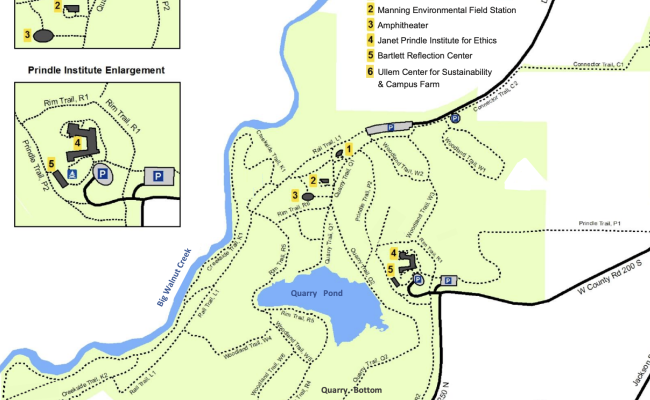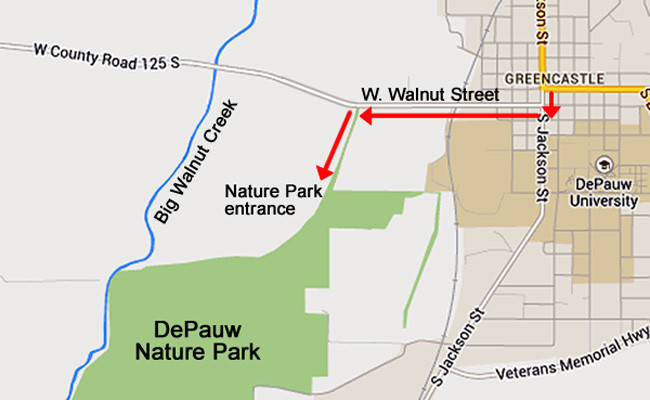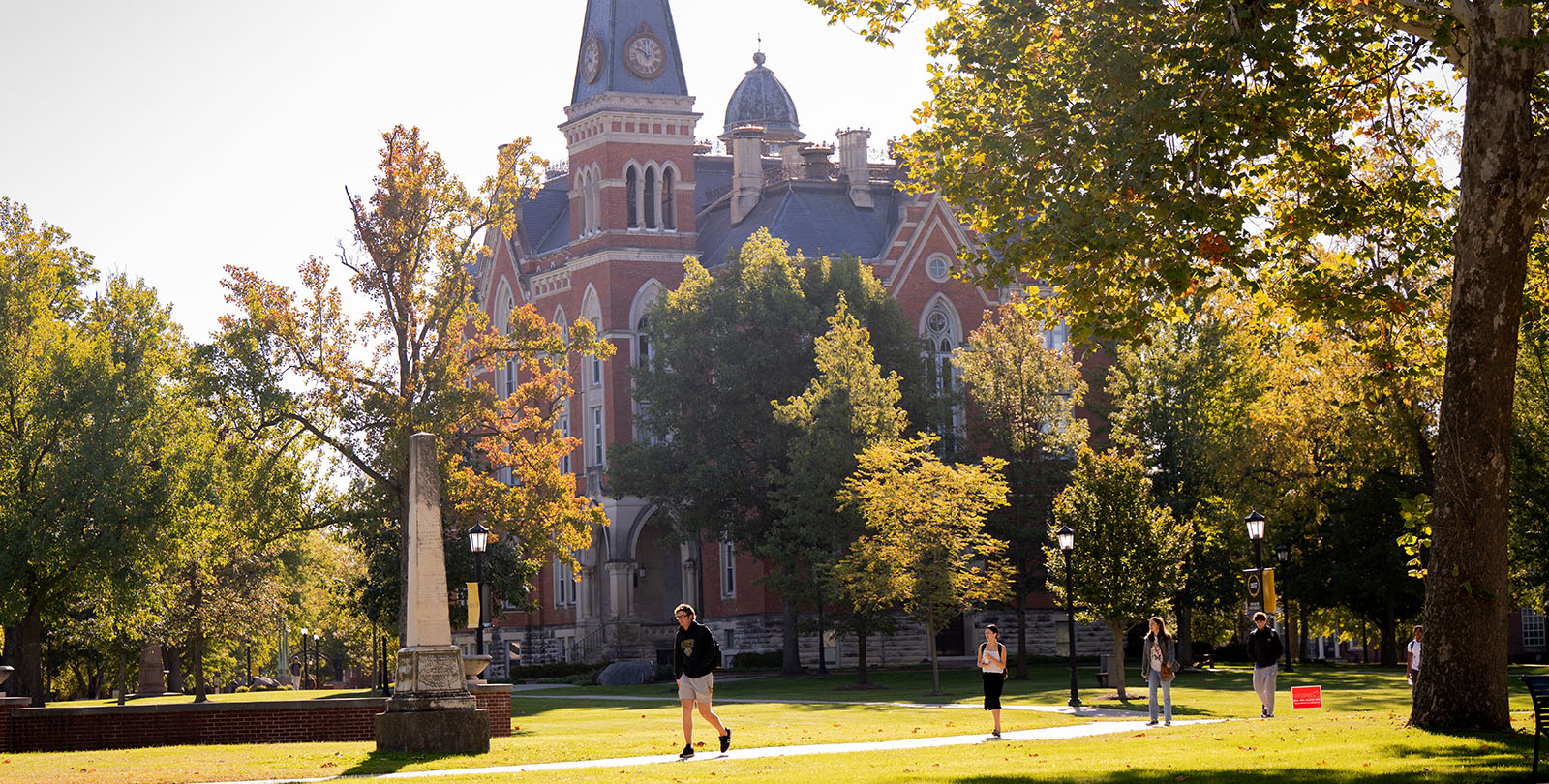
There is no end to your discovery here.
520 acres. Flora and fauna. Hiking trails. The DePauw Nature Park is open every day.
Rules
Take the initiative. Please observe the following Nature Park rules.


Driving From Downtown Greencastle
From downtown Greencastle, go south on Jackson Street.
Turn right onto W. Walnut Street going west.
Follow W. Walnut Street for about 0.6 mile.
The driveway to the Nature Park is on the left.
Follow the driveway about 0.5 mile to the main parking lot.
The Nature Park is home to the Janet Prindle Institute of Ethics, the Ian and Mimi Roland Welcome and Activities Center, the Manning Environmental Field Station, and the James and Sue Bartlett Reflection Center.
To reserve the Welcome Center, Bartlett Reflection Center, or the outdoor amphitheater, contact the Office of Conference and Campus Events at jmsibbitt@depauw.edu.
We charge everyone unless it is academically related to DePauw or if it is an approved educational field trip. We charge for retirement parties, birthday parties, anniversary parties, weddings, receptions, etc. No weddings will be held during the Academic School Year, Alumni Reunion Weekend, or on holiday weekends.
Standard reservation prices:
Amphitheater: $100
Welcome Center: $100
Bartlett Reflection Center: $100
Wedding reservation prices:
Amphitheater: $500
Welcome Center: $200
Bartlett Reflection Center: $200
For additional information about planning weddings in the DePauw Nature Park, click here: weddings.docx.
Planning of events and use of the Nature Park venues should take into consideration the unique characteristics of the park environment. We have guidelines for use to ensure everyone's safe and rewarding use of the park. Please use the links on this web site to learn about the resources and opportunities at the Nature Park.
We invite you to use our park to conduct your research. To help us maintain records of projects, please complete a research project form.
Between 1917 and 1977, the Nature Park was the site of a limestone quarry, owned and operated by Hanson Aggregates. Limestone rock in the quarry began forming approximately 350 million years ago from the remains of animals living on the bottom of an inland sea that covered this area. The layers of remains are the basis of the rock layers observed in the quarry walls.
With the quarry dormant for decades, Hanson Aggregates generously donated 280 acres of the land and leased the remaining 178 acres to DePauw University for $1 per year for 99 years. DePauw acquired adjacent property to increase the total size of the Nature Park to 520 acres. DePauw commissioned Mansur Developers in 2002 to design a Master Plan for possible uses of the Nature Park. DePauw completed Phase I of the Master Plan in 2004 and opened the Nature Park to the public in September 2004.
The Phase I work included demolition and removal of remaining buildings from the quarry operation, clean-up of debris and fuel spills from storage tanks, improving the driveway and parking, arranging for power and water utilities, installation of water fountains, construction of primitive campsites, improvement of outdoor classrooms, installation of ten miles of trails, and construction of the Amphitheater.
DePauw completed Phase II of the plan in fall 2005. The Phase II work included construction of the Manning Environmental Field Station and the Ian and Mimi Rolland Welcome and Activities Center. Other work included installation of a sanitary sewer system and railings on the Rim Trail.
The Prindle Institute for Ethics was completed in 2007. The mission of the institute is to enhance teaching, learning, and research in ethics at DePauw. The Bartlett Reflection Center was completed in 2009. The Reflection Center is located next to the Prindle Institute within the Nature Park. Both the Prindle Institute and the Reflection Center received LEED (Leadership in Energy and Environmental Design) Gold certification for their environmentally-friendly and sustainable architectural design.
For a complete history of the quarry, please click here.
